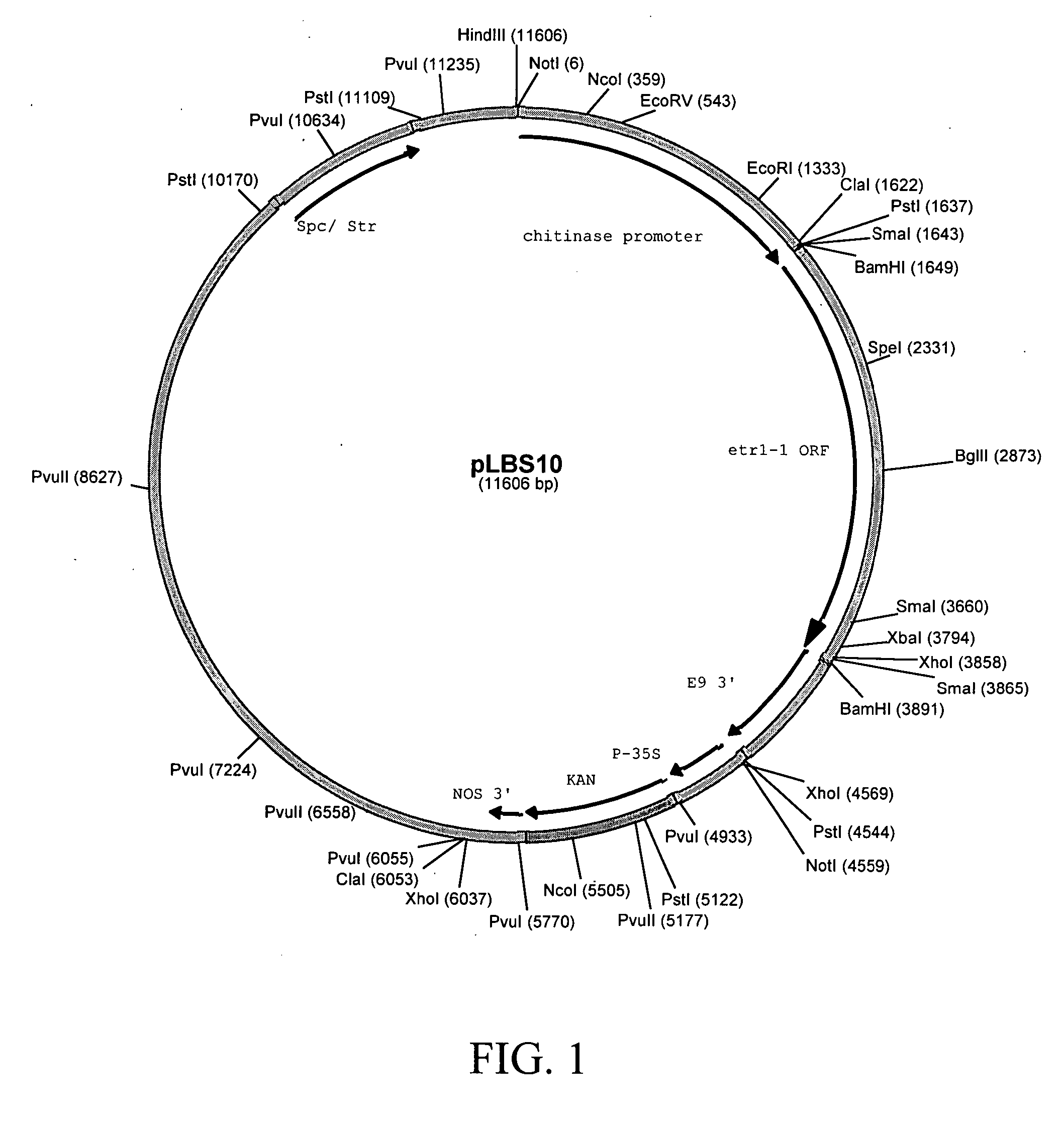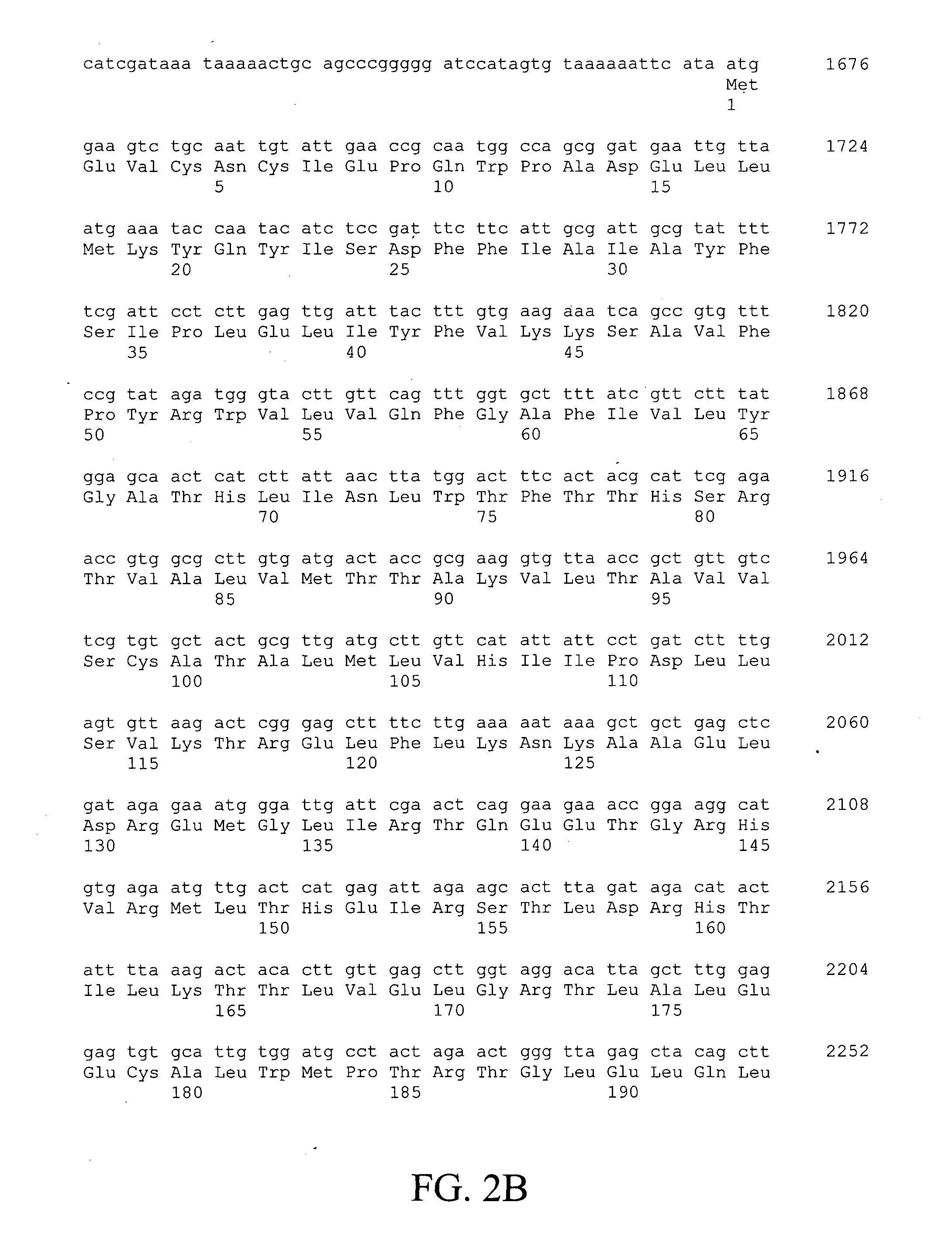Materials and methods for tissue-specific targeting of ethylene insensitivity in transgenic plants
- Summary
- Abstract
- Description
- Claims
- Application Information
AI Technical Summary
Problems solved by technology
Method used
Image
Examples
example 1
Results from Transformants Containing pLBS105
[0046] Plants transformed with plasmid pLBS105, which contains a promoter from a cotton chitinase gene fused to beta-glucuionidase reporter gene, were produced by standard Agrobacterium-mediated transformation as described in McCormick et al. (1986). Twelve independent transformation events were obtained. Of these lines, eleven were shown to express the reporter gene in the target tissue, flower abscission zones. The majority of these expressed the reporter gene at high levels. Only a subset of these lines (two) showed absolute specificity in expression, with the others exhibiting weak non-specific expression in other tissues. This result illustrates the difficulty of identifying transcriptional promoters that are completely tissue-specific. However, total tissue specificity is not necessarily required for success of the invention, as weak non-specific expression may not be sufficient to cause negative phenotypic effects in the non-target...
example 2
Results from Transformants Containing pLBS107
[0047] Plants were transformed with plasmid pLBS107 (SEQ ID NO. 9), which contains a promoter from a cotton chitinase gene fused to the ethylene receptor gene etr1-1 and regenerated as above. The etr1-1 gene product, when expressed in plant tissues, results in ethylene insensitivity in those tissues. To date, a total of 39 independent transgenic events have been generated. Of these independent lines, 17 have been evaluated for their ability to retain flowers under stress conditions (Table 2). The stress involved treating intact tomato plants for 48 hours with 10 parts per million ethylene gas in a closed container. The chamber was opened after 16 hours to permit exchange of fresh air, resealed and ethylene again added to a final concentration of 10 ppm. After 48 hours, each plant was assessed for retention of flowers. This treatment normally induces flowers to fall off (abscise) by the end of the treatment. Plants are evaluated on the bas...
PUM
 Login to View More
Login to View More Abstract
Description
Claims
Application Information
 Login to View More
Login to View More - R&D
- Intellectual Property
- Life Sciences
- Materials
- Tech Scout
- Unparalleled Data Quality
- Higher Quality Content
- 60% Fewer Hallucinations
Browse by: Latest US Patents, China's latest patents, Technical Efficacy Thesaurus, Application Domain, Technology Topic, Popular Technical Reports.
© 2025 PatSnap. All rights reserved.Legal|Privacy policy|Modern Slavery Act Transparency Statement|Sitemap|About US| Contact US: help@patsnap.com



